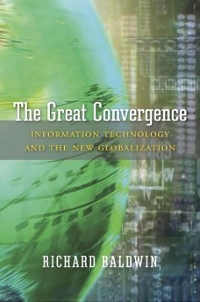Question
Historically, South Korea has been largely closed to foreign direct investment. During the 30-year dash from one of the world's poorest nations to one of
Historically, South Korea has been largely closed to foreign direct investment. During the 30-year dash from one of the world's poorest nations to one of its richest, South Korea closely adhered to the Japanese model of development, severely restricting foreign ownership of industrial and commercial activities. However, in 1997 South Korea's long period of economic expansion came to an abrupt end when a financial crisis swept across Asia. This produced a sharp drop in economic activity in the country. The Korean currency stumped against the dollar, requiring the government to seek $58 billion in aid from the International Monetary Fund. As demand for their products plummeted, dozens of highly leveraged South Korean companies found themselves unable to service the debt that they had taken on during the boom years to finance their expression. Many teetered on the edge of bankruptcy. The government responded by removing many of the restrictions to foreign direct investment, including regulations that prohibited foreign firms from making hostile takeovers of South Korea enterprises.
The impact was dramatic. FDI surged from $3 billion in 1997 to $9.3 billion in 2000. The total stock of foreign investment in South Korea soared from $5.2 billion in 1990 to $62.7 billion by the end of the decade. While many Koreans initially viewed the new wave of foreign investment with deep suspicion and the radical press demonized foreign companies as unwelcome guests feeding off the local market like leeches, it quickly became apparent that the reality was something else. An example was the acquisition of Samsung's unprofitable construction equipment division by Sweden's Volvo in February 1998 for $572 million. This was South Korea's first major sale of a distressed company to a foreign investor, and both the public and Samsung employees greeted the sale with deep apprehension. Two years later, however, most of those fears had been put to rest.
Volvo immediately launched an ambitious investment programme, committing another $200 million to the plant in an attempt to turn the ex-Samsung facility into its main global base for excavators and other construction equipment. The company transferred leading-edge manufacturing technology to the plant, moved in some of its very best managers to oversee the operations, and made the facility its global center for R&D in excavators. Volvo even closed its excavator plant in Sweden, signalling the company's commitment to the Korean facility. Although some of 13 percent of the 1655 employees at the plant left after the Volvo acquisition, these job reductions were achieved through attrition and not layoffs. Volvo refocused the production of the plant, emphasizing higher-quality and higher-priced machines that promise better profit margins. The old Korean emphasis on sales volume and market share has been replaced by a focus on product quality, operating efficiency and profitability. The management hierarchy was significantly was removed, decision-making responsibilities were pushed down the line to staff managing work teams.
By 2002, the plant was once more making a profit and production had increased from 3543 units in 1998 to 6331 units. Also, exports from the plant had surged from 34 percent of output in 1997 to 68 percent in 2002. Volvo then had a 7 percent share of the global market for large excavators, and planned to increase that between 10-15 percent by 2006-2007 with production from the Korean plant.
a)Summarize the issue highlighted in the case.
b)Using the case information, what are the consequences of foreign direct investment for the host country?
c) What policies of home-country as well as that of host-country can influence foreign direct investment and how?
Step by Step Solution
There are 3 Steps involved in it
Step: 1

Get Instant Access to Expert-Tailored Solutions
See step-by-step solutions with expert insights and AI powered tools for academic success
Step: 2

Step: 3

Ace Your Homework with AI
Get the answers you need in no time with our AI-driven, step-by-step assistance
Get Started


